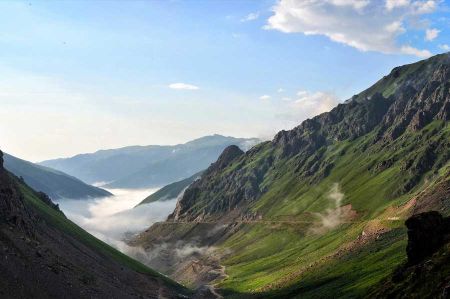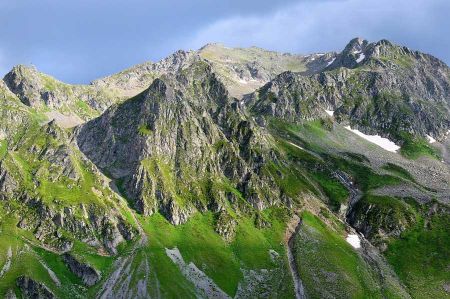At Kaçkar Dağı, the highest peak in the Pontic Mountains
- Written by Portal Editor
In recent years, more and more nature lovers and outdoor enthusiasts have found their way to Turkey.
Initially, it was the Lycian Hiking Trail and the St. Pauls Trail that attracted lovers of hiking on nature trails, but today it is increasingly mountain hikers and climbers who are striving for new destinations for hiking tourism in unspoiled nature.
The Kaçkar Mountains are becoming increasingly popular as a destination for nature lovers. However, as a rule, individual travellers are still traveling in the Kaçkar Mountains, so that one only occasionally encounters groups of people.
The eastern Pontus Mountains (in Turkish named with Doğu Karadeniz Dağları) extend along a length of 400 kilometres along the Black Sea coast inland from Trabzon to beyond Rize, the two most important starting points for visiting the Kaçkar Mountains. Comparable to the Alps, the Pontus Mountains extend approximately 1,000 kilometres in length with numerous parallel chains up to 200 kilometres inland.
At 3,932 meters above sea level, Kaçkar Dağı is the highest peak in eastern Pontus, about 40 kilometres from the Black Sea coast, 70 kilometres west of Rize and 120 kilometres away from Trabzon. It is only 70 kilometres to the eastern border of Georgia with its port city of Batumi. Two more peaks of over 3,000 meters are the Üçdoruk Tepe with 3,711 meters about 15 kilometres to the west and the Kükürt Tepe with 3,348 meters about 35 kilometres north-northeast of the Kaçkar Dağı.
Creation of the Pontus Mountains and the Kaçkar

This geological process is far from being finished, which is shown again and again by earthquakes that are small or, unfortunately, sometimes stronger. Through exact measurements, we now know that the mountains like the Alps, the Taurus and the Pontic Mountains still increase by 1 - 3 millimetre per year, but this is compensated by the strong erosion in the same period.
From this point of view, it is easy to understand if you suddenly encounter sedimentary rock during the hike in the high mountains, which you actually just suspect on the coast. We were lucky enough to come across a team of scientists about 80 kilometres from the coast who had to drill deep to investigate the subsurface. When the drill core was then analysed from a depth of around 1100 meters, marine bivalve molluscs were found in the sediments that were completely preserved.
Nature lovers and hikers experience untouched nature
Again and again you come across small lakes and meltwater pools, which produce light effects reflecting in the sun. In general, there are completely different climatic conditions, depending on the orientation of the mountains, so the northern slopes are very humid due to the oceanic influence and therefore heavily overgrown, while the south-facing mountain slopes feel more continental and very dry climate and therefore show little vegetation.
The first drawn circular hiking trails enable hikers to take scenic walks in this fantastic mountain world.
Please read as well:
Hiking in the Vienna Woods - our tour to Most Alm
Hiking - the stone arch bridges in Pindos Mountains
